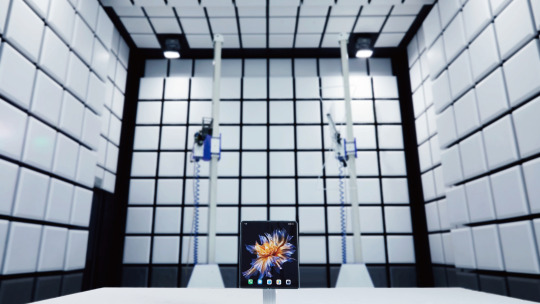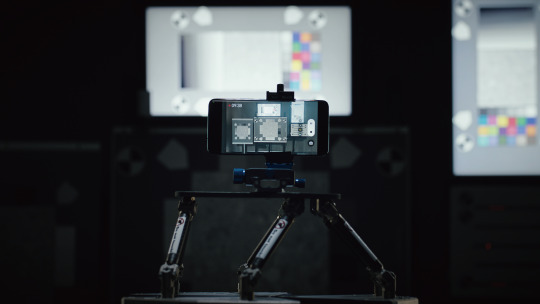#idc smartphone shipments
Explore tagged Tumblr posts
Text
📉 Big News in the Smartphone World! 📱🌍 Apple's reign as the top smartphone seller ended in Q3 2023, with Samsung seizing the throne in Q1 2024! 🍏➡️🔝 Despite lower shipments, Samsung's market share soared, says IDC analysis.
#AppleVsSamsung#MarketBattle#TechNews#SamsungWins#MarketShift#TechRivalry#AppleDefeat#SamsungSupremacy#MarketUpdate#TechGiant#AppleLoss#SamsungDominance#MarketLeadership#TechIndustry#AppleVsSamsungBattle#SamsungVictory#MarketTrends#TechCompetition#AppleDownfall#SamsungSuccess#world news#breaking news#global news#news#usa news
2 notes
·
View notes
Text
Apple Witnesses Record Growth as India’s Smartphone Shipments Rise 4 Percent YoY in 2024: IDC Report
Apple witnessed a record number of unit shipments in India in 2024, according to a report by a market research firm. Overall, smartphone shipments in India grew four percent year-over-year (YoY) in 2024, reaching a total of 151 million units. The growth was reportedly a result of a strong first-half performance with a seven percent growth, which compensated for a slower two percent growth in the…
0 notes
Text
Apple Witnesses Record Growth as India’s Smartphone Shipments Rise 4 Percent YoY in 2024: IDC Report | Daily Reports Online
Apple witnessed a record number of unit shipments in India in 2024, according to a report by a market research firm. Overall, smartphone shipments in India grew four percent year-over-year (YoY) in 2024, reaching a total of 151 million units. The growth was reportedly a result of a strong first-half performance with a seven percent growth, which compensated for a slower two percent growth in the…
0 notes
Text
Indian Smartphone Market Growth in 2024
Indian Smartphone Market Sees 4% Growth in 2024, Apple Shipments Soar The Indian smartphone market grew by 4% year-over-year in 2024. Shipments reached 151 million units. This information is according to International Data Corporation’s (IDC) Worldwide Quarterly Mobile Phone Tracker. This growth was driven by various factors, including post-festive discounts, extended warranties, and financing…
0 notes
Text
Apple, Samsung smartphone shipments fall in fourth quarter as China competition bites, IDC says
0 notes
Text
Vivo tops India’s smartphone market, Oppo gets second position: IDC
India’s smartphone shipments reached 46 million units in the third quarter of 2024, marking a 5.6 percent year-over-year growth, according to the International Data Corporation’s (IDC) Worldwide Quarterly Mobile Phone Tracker.Vivo led the market for the third straight quarter with 15.8 percent share, driven by its Y series and new T3 and V40 models. Oppo secured second place with 13.9 percent…
0 notes
Text

Have We Passed the Peak of the Smartphone Era?
Global smartphone market
by Felix Richter,Feb 23, 2024
Despite the ongoing transition to 5G, which has thrown a lifeline to smartphone manufacturers struggling to keep up growth in the maturing smartphone market, global smartphone shipments dopped to the lowest level in a decade last year. According to estimates from IDC, smartphone vendors shipped 1.17 billion devices last year, down more than 20 percent from 2016, when smartphone shipments peaked at 1.47 billion units.
While many experts think that “peak smartphone” is already behind us, market research group IDC remains hopeful for the industry to return to growth in 2024 and beyond. "The tide has finally turned and it feels safe to say the worst is behind us," Nabila Popal, research director at IDC, said in November 2023. "As we enter the new era of low single-digit growth and lengthened refresh cycles, it is clear the market is maturing. While the total available market will remain below pre-pandemic shipment levels throughout the forecast, the bright side is that average selling prices and market value will remain notably higher than before."
0 notes
Text
Apple rebounded into the top five smartphone vendors in China in the third quarter of 2024, capitalizing on the tailwinds of its latest iPhone 16. According to IDC, Apple currently accounted for 15.6% of the Chinese smartphone market, placing it second by market share; that came at the cost of a small year-over-year decline, though, down to 16.1% in the same quarter last year. Apple’s year-over-year shipment growth did not budge during the period.
Huawei has also taken a very close lead over Apple in this competitive arena and stood at the helm with 15.3% market share. In fact, technological giant has witnessed an impressive revamp from what all it has envisaged, and its smart phone shipment ramped up by 42% on a year-over-year basis reflecting tremendous recovery in the world’s largest smartphone market. Recovery for this MNC mainly arisen after the success of Mate 60 smartphone, and advanced chip technology paved way for the rejuvenation of its re-entry in the Chinese market.
With the Mate 60, which it released last year, the competition from Apple and Huawei has hit an all-time high. Although Huawei is regressing, primarily due to U.S. sanctions that have disqualified it from using high-end semiconductors and even access to the latest software, Huawei still does not stop trying, revealing this overly ambitious tri-foldable Mate XT.
This is a tremendous competitive pressure on Apple because the company had slipped out of the top five smartphone rankings in China earlier this year. Analysts point out that Huawei has shown steady growth during each of the last four quarters, and its recent launch of a tri-foldable phone has huge potential for catapulting the foldable smartphone market further.
Given this competitive trend, Apple is relying on its iPhone 16 series to put the shine back in China. Also, it plans to launch a new set of AI functionalities called Apple Intelligence, which will roll into the US market by fall. A release date for China hasn’t been announced because regulatory conditions are complex there.
The country leader in the Q3 in volume share was Vivo with 18.6% and a year-on-year shipment growth of 21.5%. Xiaomi and Honor ranked fourth and fifth, respectively. “In China, the iOS shipments declined by 6 per cent YoY, continuing a decline that started earlier this year, said Canalys, underlining further how the company is facing trouble as the competition firm and optimistic.
0 notes
Text
Infinix Extends Positive Growth Trend with 18.8% year on year increase in Q2 2024
Infinix, a popular tech brand targeted at young consumers, has continued its strong growth with a fifth consecutive quarter of year-over-year increases. According to IDC’s Worldwide Quarterly Mobile Phone Tracker, Infinix saw an 18.8% increase in global smartphone shipments in Q2 2024 compared to the same period last year, showing its growing influence in global markets. In Pakistan, Infinix…
0 notes
Link
IDC has revised its global smartphone shipments forecast 2024, projecting a 5.8% year-on-year (YoY) growth to 1.23 billion units. The market intelligence firm’s optimistic outlook is driven by strong growth in affordable Android devices across emerg #AI #ML #Automation
0 notes
Text
IDC: GenAI smartphones to drive global shipment growth in 2024
New Post has been published on https://thedigitalinsider.com/idc-genai-smartphones-to-drive-global-shipment-growth-in-2024/
IDC: GenAI smartphones to drive global shipment growth in 2024
.pp-multiple-authors-boxes-wrapper display:none; img width:100%;
IDC has revised its global smartphone shipments forecast 2024, projecting a 5.8% year-on-year (YoY) growth to 1.23 billion units. The market intelligence firm’s optimistic outlook is driven by strong growth in affordable Android devices across emerging markets and substantial interest in generative AI-capable smartphones in premium segments.
IDC’s senior research director, Nabila Popal, noted that Android devices are expected to see growth rates nine times faster than iOS at 7.1% compared to 0.8%. This disparity is attributed to increasing competition for Apple in China and a higher comparison base year for the iPhone maker.
However, the forecast suggests potential upside for iOS, depending on the reception of GenAI features in the upcoming iPhone 16 and Apple’s ability to establish local AI partnerships in China. IDC anticipates an improved trajectory for iOS in 2025, with 4% YoY growth expected due to the anticipated momentum of Apple Intelligence.
The report highlights the rapid adoption of GenAI smartphones, forecasting a 344% growth in this segment to capture 18% of the total market by the end of 2024. IDC research director Anthony Scarsella pointed out that most flagship models will likely incorporate some on-device GenAI features.
“Although GenAI smartphones are relatively new in the market, premium flagships will continue to adopt GenAI features to help separate them from the pack,” said Anthony Scarsella, research director for IDC’s Worldwide Quarterly Mobile Phone Tracker. Notably, the average selling price for GenAI-capable smartphones is expected to be more than double that of non-GenAI devices, further driving the premiumisation trend in the industry.
The smartphone market’s recovery comes after a challenging period. IDC’s data shows 12% growth in the first quarter of 2024, followed by 9% growth in the second quarter. This positive trend has bolstered confidence in the industry’s performance for the latter half of the year.
Even the latest Canalys research revealed that the worldwide smartphone market grew strongly in the second quarter of 2024, with shipments reaching 288.9 million units. “The market has grown for three consecutive quarters, driven by product innovation initiatives and improvements in business conditions,” Canalys stated.
Mirroring IDC’s data, Canalys noted that despite a modest 1% shipment increase, Samsung held onto pole position with 53.5 million units shipped. Meanwhile, Apple held second place with 45.6 million units, bolstered by solid momentum in North America and APAC’s emerging markets.
China’s Xiaomi, with its competitive product offerings, followed closely with shipments of 42.3 million units to achieve a market share of 15%. “Greater China’s growth trajectory now mirrors global markets, driven by improved macroeconomic conditions and renewed business confidence among channel and smartphone brands,” the report stated.
Like elsewhere, the Chinese domestic market will see local Chinese brands use GenAI features to stand out in the premium segment, aiming to capture rising high-end spending and apply successful strategies worldwide.
“Samsung will inevitably focus on integrating its Galaxy ecosystem to create strong value propositions for consumers via its flagship offerings with exclusive GenAI features,” Canalys Senior Analyst Sanyam Chaurasia said. Apple will look to accelerate replacement demand in these markets via its AI strategy, with hybrid models, enhanced privacy and personalised Siri features.”
Even Canalys doesn’t foresee the smartphone market seeing double-digit growth in 2024 despite the seasonal demand in the year’s second half. Overall, the global technology market analyst firm anticipates the smartphone market to grow in the mid-single digits in 2024, driven by recovering inventory levels, eased import restrictions, and a better economic climate.
(Photo by Samuel Angor)
See also: Arm unveils new AI designs and software for smartphones
Want to learn more about AI and big data from industry leaders? Check out AI & Big Data Expo taking place in Amsterdam, California, and London. The comprehensive event is co-located with other leading events including Intelligent Automation Conference, BlockX, Digital Transformation Week, and Cyber Security & Cloud Expo.
Explore other upcoming enterprise technology events and webinars powered by TechForge here.
#2024#ai#ai & big data expo#AI strategy#America#amp#android#APAC#apple#apple intelligence#arm#Art#Artificial Intelligence#automation#Big Data#billion#brands#Business#california#Capture#channel#China#climate#Cloud#comparison#competition#comprehensive#conference#consumers#cyber
1 note
·
View note
Text
Forecasting Future Trends and Tech Innovations in Mobile App Development

The speed at which the mobile app development world changes is astonishing. New trends and tech innovations always pop up, shaping the future of app development. This affects everyone from developers to businesses to customers. Let's dive into this fast-paced world to uncover these trends. Don't blink, or you might miss something!
Our love for smartphones and their apps for communication, shopping, and more grows every day. Rapid advancements in this field have excited me for over 20 years, and I want to share this excitement with you. So, let's get started and explore some of these top trends and technologies!
AR and VR: No longer just for gamers! Augmented reality (AR) and Virtual reality (VR) are changing the world. They are revolutionizing industries like education, healthcare, and retail. AR adds digital data to the physical world, making it interactive and fun. VR plunges you into virtual worlds for training or touring.
Quick illustration: IKEA Place, an AR app, lets you see how furniture will fit in your room before you buy!
Stats: Statista projects that AR and VR will hit $209.2 billion globally by 2022.
IoT and Mobile App Fusion: Smart homes? Yes, please! The Internet of Things (IoT) is expanding quickly. It combines everyday objects with the internet for smooth device communication. Mobile apps control and monitor IoT devices with ease. Be it controlling smart thermostats or monitoring health systems, IoT-powered apps are making the future look bright.
Let's look at Google Nest. It lets you control your smart gadgets from your phone!
Forecast: Gartner says 75 billion IoT devices will connect worldwide by 2025.
PWAs and Cross-Platform Development: Efficient and reliable! If you want efficient alternatives to native apps, try Progressive Web Apps (PWAs). They provide cross-platform experiences without any app store approvals. Plus, cross-platform frameworks like Flutter let you write code once and deploy it on iOS and Android.
Up for a case study? Check Twitter Lite, a PWA that works fast, even on slow networks. This brings on more users, providing a wider reach.
Impressive fact: Google says PWAs kill bounce rates by 52% and boost user engagement by up to 137%.
Voice Recognition and NLP: Just say it! Voice-enabled apps are now common thanks to advances in NLP. This lets virtual assistants like Siri and Alexa help out with tasks like setting reminders, playing music, and controlling smart home devices.
Juniper Research predicts that voice assistant devices will find their place in over 275 million houses globally by 2023.
Foldable Devices and Wearables: They're cool! Foldable smartphones and wearables are creating unique opportunities. Foldable device developers need to create multitasking-friendly app designs. Also, lightweight apps are in high demand for wearables.
IDC forecasts global wearable device shipments will hit 396 million units by 2023.
Green Mobile App Development: Be kind to our planet! There's a rising trend towards eco-friendliness in mobile app development. This leads to apps that consider energy consumption, resource usage, and promoting eco-friendly habits.
Example: Uber and Lyft help reduce carbon emissions with carpooling features.
Stats: Statista reveals that 53% of global consumers prefer eco-friendly apps.
Conclusion: Embrace these trends and technologies To stay ahead in the evolving mobile app development field. From AR and IoT to PWAs and voice recognition, the future looks promising. Ready to take action? Dive in! Whether you're a developer, entrepreneur, or tech lover, understanding these trends helps you create better mobile experiences that connect with users and spur business growth.
0 notes
Text
OPPO Makes AI Phones More Accessible for 50 Million Users

OPPO Makes AI Phones
OPPO made clear that it is committed to ensuring that AI phones are affordable for all, highlighting the impending full-stack technical revolution and ecosystem reorganisation of AI phones. In addition, OPPO revealed a preview of the more intelligent and practical life that AI phones, in collaboration with Google, MediaTek, and IDC, are expected to bring. By integrating generative AI into every product line, OPPO promises to democratise AI phones.
Motivated by the conviction that smartphones represent the most significant personal artificial intelligence gadget, OPPO is integrating generative AI into all of its smartphone product lines with the goal of enabling everyone to own an AI phone.
In addition to building its own AI capabilities, OPPO will work with partners in the industry like as Google, MediaTek, as Microsoft, and others to provide improved AI phone experiences.
OPPO is using generative AI to increase productivity and creativity. It will also provide full-stack transformation and ecosystem restructuring to AI phones, enabling consumers to take full use of AI.
Smartphones are positioned as the most significant personal AI device due to its wide worldwide reach, sophisticated connection, and multimodal capabilities. Even if smartphones are widely used, OPPO thinks that AI should be available to more people worldwide and not only be reserved for high-end models and a select few consumers.
Billy Zhang, President of Overseas MKT, Sales, and Service at OPPO, stated, “OPPO aims to make AI phones accessible to everyone with their relentless efforts and commitment.” “OPPO is introducing generative AI to all of its product lines for the first time in the industry. They hope to make generative AI features available to around 50 million users by the end of this year.”
A recent research paper from IDC titled “Time to Democratise the Impact of AI Tech” highlights this market’s enormous potential. IDC projects that by 2024, shipments of AI phones in the sub-$1000 range will have increased by 250% to 35 million units. With phones becoming more and more commonplace, generative AI is improving experiences in entertainment, mobile gaming, and other areas.
Increasing AI Phone accessibility via cooperation and innovation
About 70% of the more than 5,000 patents that OPPO has filed in the last ten years are explicitly connected to AI imaging. Large vision models, multimodal technologies, and the creation of OPPO’s own language models have all been areas of focus for the company since 2020. Furthermore, OPPO is the first smartphone manufacturer to directly install an LLM with 7 billion parameters on the handset. OPPO has introduced more than 100 generative AI capabilities to its phones this year as a result of its advancements in AI technology.
As part of its ongoing efforts to improve AI phone experiences, OPPO is collaborating closely with leading industry players to develop a Hybrid AI Architecture that combines AI capabilities on-device and in the cloud. The Google Gemini family LLMs will be included into OPPO’s Reno12 series and the next Find X Flagship in a partnership with Google. This will provide OPPO users with even more cutting-edge and practical AI services, like AI Toolbox, which includes AI Writer and AI Recording Summary functions. Both parties are fine-tuning processors in partnership with MediaTek to improve chip storage and computational efficiency on upcoming OPPO flagship models.
Additionally, as a result of its collaboration with Microsoft, the upcoming OPPO phones will be outfitted with Microsoft features that will enhance the efficiency, accuracy, and naturalness of speech and text conversion as well as the connectivity between desktop AI and phones.
In order to explore how AI phones will allow more people to benefit from AI, OPPO invited industry experts to a panel discussion. These experts included Francisco Jeronimo, Vice President, Devices EMEA at IDC, Philipp Ennen, Principal Research Manager of MediaTek, and Susara van den Heever, Director of AI, Customer Engineering EMEA at Google Cloud.
Giving consumers access to cutting-edge AI phone experiences
OPPO’s AI phones come with a plethora of cutting-edge capabilities that are designed to ignite creativity and increase productivity.
In terms of productivity, users may digest more information and benefit from real-time translation when LLMs are combined with technologies like quick transcription. Additionally, cross-device collaboration between desktop AI and phones has increased productivity even further.
Multimodal generation and motion generation technologies have also revolutionised creative fields such as photo editing and personalised creation. For example, users may swiftly generate missing content and delete undesired things with ease using the OPPO AI Eraser tool. At the moment, it is utilised an average of fifteen times a day. Simultaneously, multimodal technology facilitates the creation of imaginative textual and visual material for social media platforms.
In the long run, the shift from smartphones to AI phones will be a gradual development that permanently changes the mobile experience. It is anticipated that the intelligent operating system will incorporate artificial intelligence agents and facilitate multimodal communication, while also offering third-party services with greater adaptability. This will cause the AI phone ecosystem to be restructured and undergo a full stack revolution.” According to Nicole Zhang, OPPO’s general manager of AI products.
As it welcomes the coming of the new AI phone era, OPPO will continue to build the best AI phone experiences through its own invention and collaboration, driven by its ambition to make AI phones accessible to everyone.
Read more on govindhtech.com
#AIphones#generativeAI#smartphones#AIcapabilities#AIdevice#mobilegaming#GoogleGemini#OPPOReno12#news#technews#technology#technologynews#technologytrends#govindhtech
0 notes
Text
Smartphone Shipments in India Grew 7 Percent YoY in H1 2024: IDC Report | Daily Reports Online
Smartphone shipments in India grew 7.2 percent year-over-year (YoY) in the first half (H1) of 2024 where 69 million units were shipped, according to a report by a market research firm. The second quarter (Q2) of the year saw 35 million smartphones being shipped, which was a 3.2 percent YoY rise over Q2 2023 shipments. The report added that the latter half of the second quarter is a crucial…
0 notes
Text
How HONOR Magic6 Pro’s AI features drive the smartphone brand to be no.1 in China
Manila, Philippines, May 3, 2024 – HONOR, the eminent global provider of smart devices, clinched the top spot among leading smartphone brands in the latest study conducted by the International Data Corporation (IDC). According to Antonio Wang, Vice President at IDC, HONOR secured a remarkable 17% share in the charts, with a staggering Year-over-Year (YoY) shipments surge of 123.3% in Quarter 1, 2024.

"Being part of a prestigious and competitive global technology company like HONOR, it's truly an honor for us. We're excited about the challenge ahead and fully committed to bringing technological breakthroughs and innovation to the Philippines. We aim to achieve significant milestones in this dynamic market,” said Stephen Cheng, Vice President of HONOR Philippines.
Moreover, HONOR’s overseas market has gained significant growth during the past year with a 200% growth rate. By Q1 2024, HONOR has entered more than 100 markets and ranked Top 5 in many markets including Europe, Midde East, Latin America and Malaysia.

An HONOR Smartphone Produced Every 28.5 Seconds
HONOR consistently dedicates over 10% of its annual income to Research and Development (R&D), with this commitment growing each year. In the realm of AI exploration alone, HONOR has invested upwards of 10 billion CNY.
At present, HONOR boasts world-class R&D and innovation capabilities, sustained by a team of over 8000 R&D professionals spread across 7 R&D centers and over 100 innovative laboratories. The pace of innovation is evident in the company's submission of over 300 new patent applications monthly.
Notably, HONOR has achieved an impressive 85% automation rate in its intelligent production line. This level of efficiency enables the manufacturing of a smartphone every 28.5 seconds, showcasing the brand's commitment to cutting-edge technology and streamlined production processes.
Emerging Battery Innovations from Automobile Industry to Smartphones
HONOR has unveiled its innovative approach to pushing the boundaries of material and structural technology, particularly evident in the Magic Series.
Breaking new ground, HONOR became the first brand to integrate emerging battery innovations from the automotive industry into smartphones, introducing the all-new Second-generation Silicon-carbon Battery to the HONOR Magic6 Series. With a theoretical capacity of 3579mAh/g for a pure silicon-based anode, this technology surpasses graphite by a remarkable tenfold. This development, akin to advancements seen in companies like Tesla, promises exceptional battery life and consistent performance.
Additionally, the Nano Crystal Shield featured in the HONOR Magic6 Pro is another testament to the brand's commitment to innovation. Through the utilization of advanced materials boasting a 50% improvement in crystal density, the Magic6 Pro achieves a shock absorption capability up to ten times greater than before. This enhancement ensures unparalleled durability, securing the device against accidental drops and impacts.

AI Falcon Camera System
Responding to the surge in popularity of "sportography" and the escalating importance of Artificial Intelligence (AI), smartphone manufacturers are doubling down on efforts to enhance capture speed and image clarity. With this, HONOR has taken proactive strides to spearhead camera innovation in the industry, with the HONOR Magic Series boasting a distinctive AI falcon camera system.
In the Image Lab located in Shenzhen, HONOR has embraced the All-scenarios Automated Comprehensive Photographic Testing System. This revolutionary approach enables the optimization of the HONOR Image Engine across an extensive array of anticipated scenarios, ensuring unparalleled performance in diverse shooting conditions. Additionally, HONOR has introduced proprietary testing equipment, a pivotal contribution to achieving the industry-leading focus accuracy of the 1200-point LiDAR Matrix Auto Focus System, notably featured in the Porsche Design HONOR Magic6 RSR.

The most awaited World’s Top 1 AI Camera Phone, HONOR Magic6 Pro, is coming officially to the Philippines on May 8, 7 PM. The latest device from HONOR is equipped with the best AI Integration and Falcon Camera System. #MagicAICameraPhone #HONORMagic6Pro
Awarded as the leading mobile phone in Camera, Battery, Audio, Display, and Selfie by DxOMark, this flagship device features a groundbreaking HONOR Falcon Camera System, boasting a 50MP Wide camera, 50MP Ultra-wide camera, and a staggering 180MP Periscope Telephoto camera, this device harnesses the power of AI to deliver unparalleled imaging experiences.
—
📧 If you wish to send an invite and feature your province/company brand/event; Just ask the author of this vlog, email us at [email protected]
Follow our Social Media Accounts: Facebook Fan Page: https://www.facebook.com/TakeOffPHBlog
Instagram/Twitter/TikTok: @takeoff_ph
Website: https://takeoffphilippines.com
Subscribe to our YouTube Channel: https://www.youtube.com/c/TakeOffPhilippines
0 notes
Text
Apple IPhone Shipments Decline Globally Amidst Rising Competition

(Source-in.mashable.com)
Apple Sees Nearly 10% Dip in iPhone Shipments
Apple experienced a significant decline in iPhone shipments globally during the first quarter of 2024, according to a report by the International Data Corporation (IDC). The tech giant shipped 50.1 million units in the first quarter, marking a 9.6% decrease from the 55.4 million shipments recorded in the same period the previous year. This decline in shipments contributed to Apple’s drop in market share from 20.7% to 17.3% year-on-year.
Samsung Regains Top Spot, Chinese Challengers Surge
Samsung reclaimed its position as the leading smartphone manufacturer in the first quarter, with a 20.8% market share, shipping nearly the same number of units as the previous year at 60.1 million. Meanwhile, Chinese competitors Xiaomi and Transsion saw remarkable growth in shipments. Xiaomi’s shipments surged by 33.8% to 40.8 million units, securing a 14.1% market share, while Transsion experienced an 84.9% jump to 28.5 million units, holding a 9.9% market share. This surge in Chinese challengers contributed to Apple’s decline in market dominance.
Market Dynamics and Competition Outlook
Analysts predict that despite Apple and Samsung’s stronghold in the high-end smartphone market, the resurgence of Huawei in China and the notable gains from competitors like Xiaomi, Transsion, OPPO/OnePlus, and vivo will compel both Apple and Samsung to seek opportunities for expansion and diversification. While Xiaomi is rebounding strongly from previous declines, Transsion is emerging as a stable presence in the top five smartphone manufacturers with aggressive growth in international markets.
Global Smartphone Market Shows Signs of Recovery
Despite macroeconomic challenges, the global smartphone market witnessed a 7.8% year-over-year increase in total shipments during the first quarter, reaching 289.4 million units. This marks the third consecutive quarter of shipment growth, indicating a strong recovery trajectory, according to IDC. The firm views this as a positive indicator, suggesting that despite challenges, the smartphone industry is steadily bouncing back. Apple’s struggles in the face of intensified competition underscore the shifting dynamics of the global smartphone market, where Chinese players are gaining momentum and challenging the dominance of traditional giants like Apple and Samsung. As the market continues to evolve, companies will need to adapt and innovate to maintain their positions in an increasingly competitive landscape.
Also Read: Shimao Group Faces Liquidation Petition Amidst China’s Property Sector Turmoil
0 notes